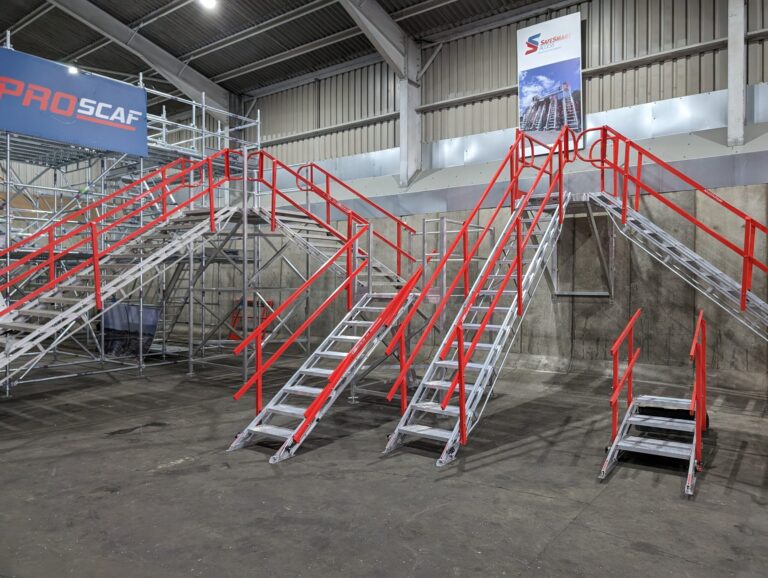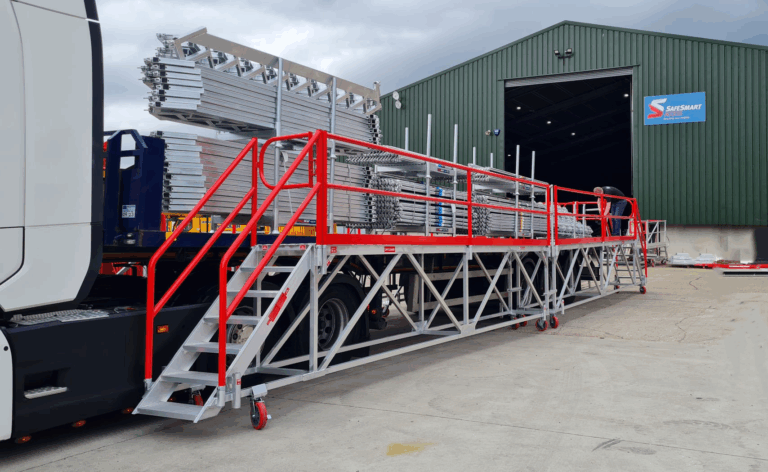The erection and dismantling of aluminium scaffolding or steel scaffolding is a dangerous and high-risk activity to workers and the general public. This blog aims to assist anyone involved in this type of work.
The Scaffold Design
The Work at Height Regulations 2005 state that the scaffold should be designed by a bespoke calculation, by a competent person and to ensure that the strength, rigidity and stability while erected, used and dismantled has adequate strength.
To start off the planning process, the scaffold contractor should be supplied with relevant information to ensure a smooth and accurate design process. Some of the details required will include: the location, the timeline, the intended use, maximum working loads and maximum number of people using the scaffold, any access requirements and the number of boarded lifts.
Once these details have been collated, the scaffold contractor can then put together their requirements. For scaffold that falls outside of the standard configuration, then it must be ensured that safe erection and dismantling techniques are followed throughout the duration of works. For more complex scaffold, drawings need to be produced and if relevant, specific instructions also included.
Any proposed modification or alteration that is outside of the scope of a generally recognised configuration should be designed by a competent person and proved by calculation.
Competence and Supervision of Scaffolding Operatives
It is essential that scaffolders and their supervisors are sufficiently trained to ensure that accidents are prevented on site. It is also vital that staff are monitored to ensure that they are following proper safety standards. Clients, principle contractors and others have a responsibility to ensure that any work carried out on their site is undertaken in a safe manner.
The erection, alteration or dismantling of all scaffolding must be undertaken under the direct supervision of a competent person. For a complex structure, an ‘Advanced Scaffolder’ who has received training in a specific system of scaffold for the complexity will need to be involved.
All scaffolding operatives will need to be up to speed with the latest changes to safety guidance and good working practices within the scaffolding industry. Pre-start briefing and toolbox talks are two good ways of keeping staff informed.
Protection of the Public
When scaffold operations are in progress, the public must be excluded from both the area of work and a sufficient area around it. The contractor should also ensure that disabled people can access pavements covered by scaffold too.
Scaffold Inspection
Following installation and before first use, it is the scaffold users responsibility to ensure that the scaffold is safe to use. This should be inspected must be carried by a competent person, no more than every 7 days thereafter and following any circumstances liable to jeopardise the safety of the installation such as high winds, etc.
If you are unsure which scaffolding product is best to use for a particular situation or environment please contact Safesmart Access today – The UK’s Authority in Portable Work Platforms and Scaffolding.






